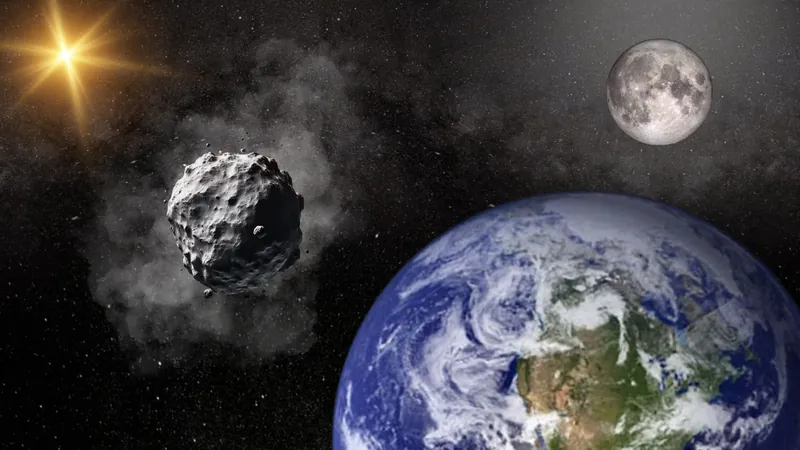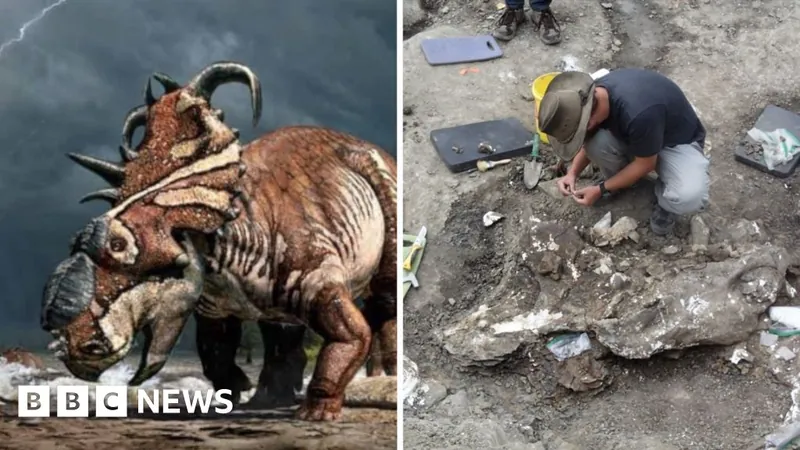
Earth Set to Greet a 'Mini-Moon' This Weekend – A Rare Cosmic Encounter!
2024-09-26
Introduction
This Sunday, September 29, astronomers are buzzing with excitement as Earth is expected to capture a "mini-moon" known as asteroid 2024 PT5. Unlike our enduring companion, the Moon, which has orbited Earth for around 4 billion years, this tiny celestial visitor will only have a fleeting stay.
Capture Timing
NASA scientists from the Jet Propulsion Laboratory (JPL) estimate that the temporary capture will occur starting at 15:54 EDT (1954 UTC) and will conclude by 11:43 EDT (1543 UTC) on November 25. The excitement isn't just about adding another moon to Earth; it's about understanding the dynamics of near-Earth objects (NEOs).
About Asteroid 2024 PT5
Asteroid 2024 PT5 is part of the Arjuna asteroid belt, a collection of space rocks that follows a path similar to Earth's around the sun, approximately 93 million miles (150 million kilometers) away. This belt is home to objects that routinely come close to our planet, with some, like 2024 PT5, approaching within about 2.8 million miles (4.5 million kilometers) at relatively low speeds of less than 2,200 miles per hour (3,540 km/h).
Frequency of Mini-Moons
Though the idea of a second moon sounds fantastical, encounters like this are more common than one might think. In fact, scientists have previously documented two similar “short captures” of asteroids, each lasting only about a week. Additionally, there have been rare instances of "long-capture" events where captured asteroids orbit Earth for years.
Comparison to the Moon
However, unlike our familiar Moon that brightly illuminates the night with its significant size of approximately 2,159 miles (3,475 km) in diameter, 2024 PT5 is a mere 37 feet wide, making it significantly dimmer and harder to observe. The Moon is 308,108 times the size of this mini-moon; hence, while the public may not readily spot it, professional astronomers equipped with advanced telescopes will be on the lookout for this transient celestial body.
Observing the Event
Professional telescopes—particularly those with a diameter of at least 30 inches and equipped with CCD or CMOS detectors—are necessary to capture visual data on 2024 PT5. Standard amateur telescopes and even the naked eye will not suffice. Images and data collected during this event will provide valuable insights into the characteristics and behaviors of such miniature celestial visitors.
Conclusion
Mark your calendars for this unique astronomical event, as it presents an extraordinary opportunity to observe and learn from a tiny, fleeting companion orbiting our planet, even if just for a short time. Don't miss out; even the professionals are excited to showcase their discoveries!









 Brasil (PT)
Brasil (PT)
 Canada (EN)
Canada (EN)
 Chile (ES)
Chile (ES)
 España (ES)
España (ES)
 France (FR)
France (FR)
 Hong Kong (EN)
Hong Kong (EN)
 Italia (IT)
Italia (IT)
 日本 (JA)
日本 (JA)
 Magyarország (HU)
Magyarország (HU)
 Norge (NO)
Norge (NO)
 Polska (PL)
Polska (PL)
 Schweiz (DE)
Schweiz (DE)
 Singapore (EN)
Singapore (EN)
 Sverige (SV)
Sverige (SV)
 Suomi (FI)
Suomi (FI)
 Türkiye (TR)
Türkiye (TR)